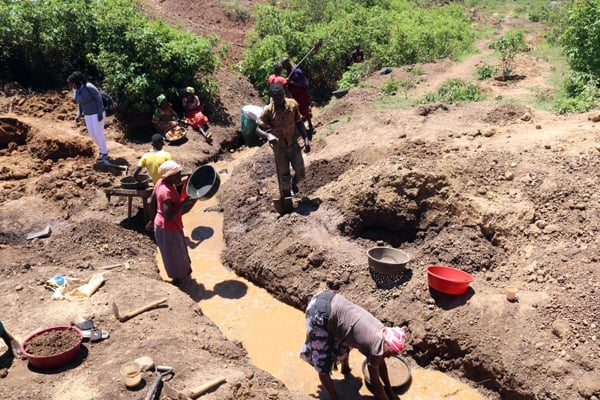Prime
On the road to make artisanal mining safer

Lynn Gitu
What you need to know:
- “...Leaders need to prioritise sustainable and responsible mining practices.
A 2019 government report estimates that more than seven tonnes of gold in Uganda is mined artisanally per year, which accounts for more than 90 percent of all the country’s gold production. Globally, it is estimated that about 20 percent of the gold comes from artisanal gold miners, whose livelihoods depend on mining.
Yet, most artisanal gold miners are rural populations who use this as a main source of income. Women depend on the sector, earning three times more from mining than any other activity. It is a lucrative income for many. For instance, Sylvia, an artisanal miner in Kassanda District, is the breadwinner for her family of three children. She says in spite of the hurdles she has faced in artisanal mining, she is able to provide for her family.
Despite the income it generates, Sylvia and other miners are also exposed daily during gold processing to mercury, a highly toxic chemical. According to Uganda’s National Action Plan for Artisanal and Small-Scale Gold Mining, 73 percent of the country’s artisanal gold is produced using mercury—resulting in 15 tonnes of mercury released annually. While the use of mercury in mining activities is prohibited under the Mining and Minerals (Licensing) Regulation 2023 (Section 255), it is still widely used as the country’s miners have access to few alternatives.
Mercury contaminates the soil, water, air, and equipment that is used leading to long-lasting ecological damage and health effects. It is highly toxic to miners and others such as children and pregnant women who come into contact with it—particularly when vaporised. Mercury emitted into the air can circulate around the rest of the country—and world—contaminating Uganda’s water, fish, and wildlife.
But promising solutions exist to reduce and eliminate the use of mercury, some of which are already being tested by miners in Kassanda and have the potential to improve the health and safety of miners like Sylvia. Using a retort to capture invisible mercury vapours, working within designated areas away from water sources, and wearing proper protective equipment ensures safer handling.
Techniques such as gravity concentration and alternative chemicals can eliminate mercury from gold processing. But often, a lack of finances, legal mechanisms and training keep some of these options beyond the reach of many miners.
The planetGOLD Uganda project is working to bridge this gap. The project is supported by the Global Environment Facility, led by the UN Environment Programme, and executed by IMPACT, in partnership with Uganda’s National Environment Management Authority and the Directorate of Geological Survey and Mines. The project activities will launch this month in Uganda, following a virtual launch last year.
The project works with governments, the private sector, and local communities to reduce mercury use and support a more formal artisanal gold sector. With the importance of the artisanal gold sector to Uganda’s economy, while at the same time being the largest source of mercury pollution, leaders need to prioritise sustainable and responsible mining practices. This starts with promoting the use of safer handling and alternatives to mercury—leading to responsible and traceable gold supply chains. This will happen through capacity building, training, and awareness campaigns.
The artisanal gold mining sector has the potential to drive development and economic empowerment for Uganda and its communities. Miners need the support and willingness of their leaders to help reach this goal.
The planetGOLD Uganda project will work in 11 mining sites across Uganda to reduce mercury use over five years. It will support formalisation of the artisanal gold mining sector and increase access to finance.
The writer, Lynn Gitu, is IMPACT’s programmes leader and oversees the planetGOLD Uganda project




